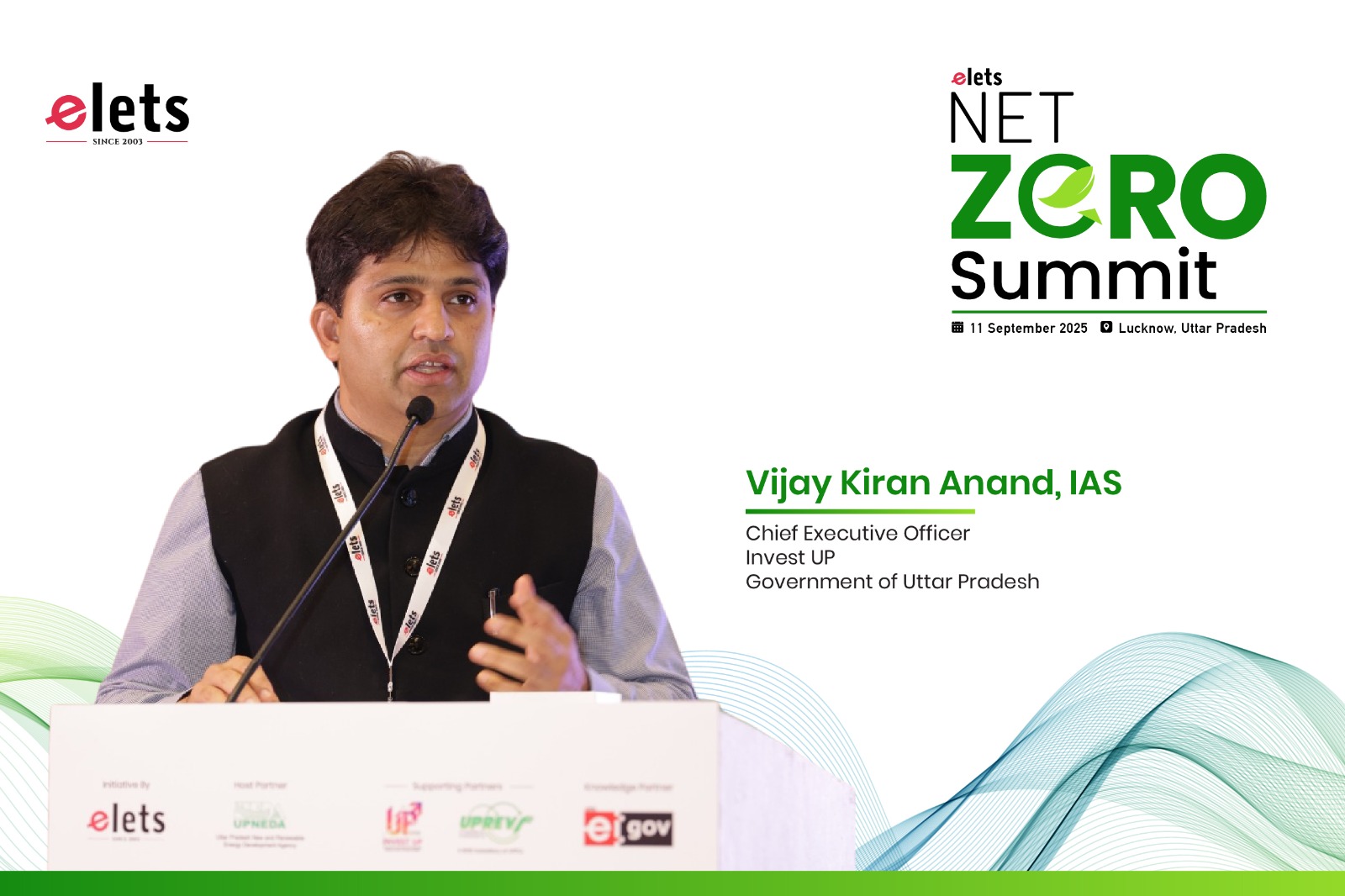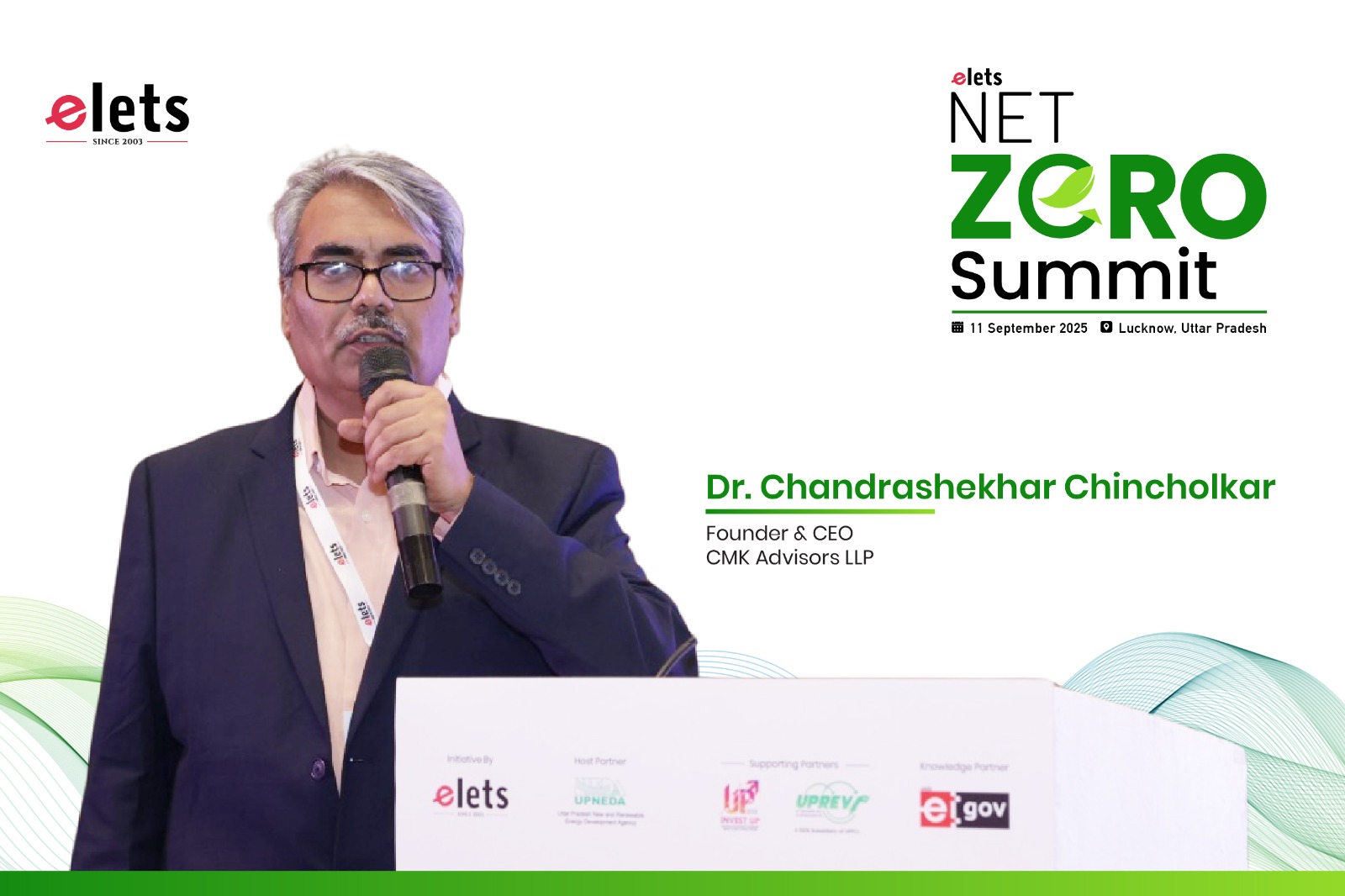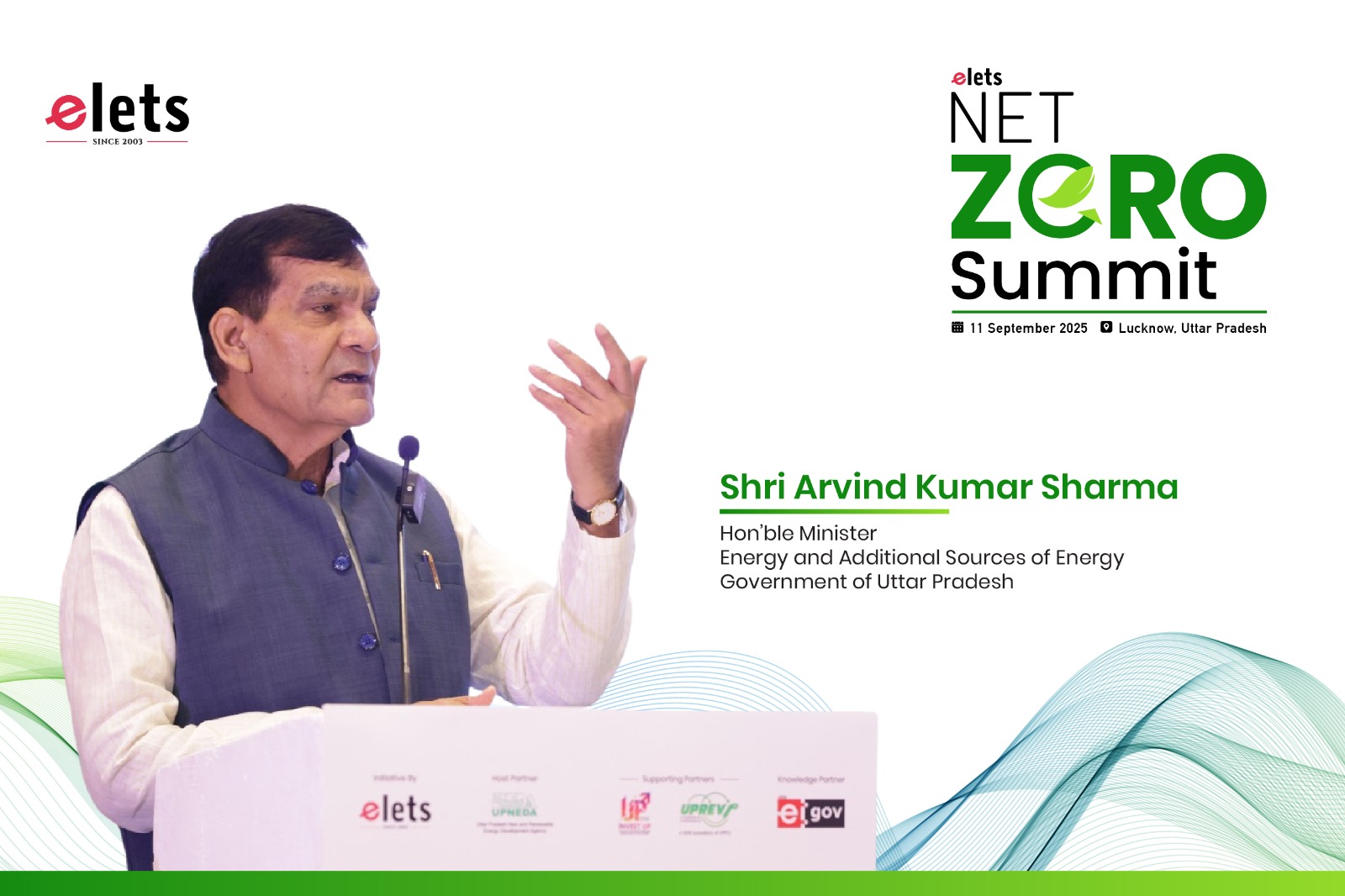
India is poised to become a global leader in green hydrogen, leveraging its vast renewable energy resources, government support, and strategic export opportunities. With the National Green Hydrogen Mission (NGHM) and a target of 5 million metric tons of green hydrogen by 2030, India is set to reduce its reliance on fossil fuels and drive industrial decarbonization. In this regard, M. A. K. P. Singh, Former Member (Hydro) at Central Electricity Authority of India (CEA) and Chief Information Security Officer, Ministry of Power, in an exclusive interview with Nijhum Rudra of Elets News Network (ENN) highlights that green hydrogen will not only enhance energy security but also create new jobs, improve public health, and support sustainable development goals.
What is the current state of the green hydrogen market in India, and how do you see its growth trajectory over the next 5 to 10 years?
India’s green hydrogen market is gaining momentum, supported by ambitious government policies and increasing private sector investments. The National Green Hydrogen Mission (NGHM), with a budget of ₹19,744 crore, aims to make India a global leader in green hydrogen production, targeting 5 million metric tons annually by 2030. The mission anticipates USD 96.68 billion in investment and the creation of over 6 lakh jobs.
Initially, the demand for green hydrogen will come from refineries and fertilizer production, but in the long term, industries like steel, transportation, and heavy manufacturing are expected to be major consumers. Both the government and private sector are working on developing infrastructure for production, storage, and transportation. India also has the potential to become a major global exporter of green hydrogen due to its abundant renewable energy resources. Major companies, including Reliance Industries and Adani Group, are strengthening the market, with Reliance expecting its green energy business to match the profitability of its oil-tochemicals segment in 5-7 years.
What are the key challenges hindering the widespread adoption of green hydrogen in India, and how can advancements in technology help overcome them?
India’s green hydrogen market faces several challenges, including the high cost of production, gaps in infrastructure, and regulatory obstacles. However, ongoing advancements in electrolyzer technology and hydrogen storage solutions are expected to significantly reduce production costs, making green hydrogen more competitive. Over the next 5-10 years, the market is projected to grow at a compound annual growth rate (CAGR) of 20.76%, fueled by increased investments in electrolyzer manufacturing and the expansion of renewable energy capacity.
As the market develops, the adoption of green hydrogen will gradually rise across key sectors like transportation, steel, and heavy industries. A transitional step in this process will involve blending green hydrogen with natural gas, which will help bridge the gap to full-scale adoption. Despite these challenges, the combination of technological innovations, strategic investments, and sectoral integration is expected to drive significant growth in India’s green hydrogen sector in the coming decade.
India has set ambitious renewable energy targets. How does green hydrogen fit into the country’s longterm energy transition strategy, and what role will it play in achieving these goals?
India has set ambitious renewable energy targets, aiming for 500 GW of non-fossil fuel capacity by 2030 and net-zero emissions by 2070. Green hydrogen plays a crucial role in this transition, offering a clean energy alternative for sectors that are difficult to electrify, such as steel, cement, refining, chemicals, and heavy transport. Produced using renewable energy sources like solar and wind, it serves as a sustainable alternative to fossil fuels.
The National Green Hydrogen Mission (NGHM) supports India’s energy goals by boosting domestic green hydrogen production, reducing reliance on imported fossil fuels, and enhancing energy security. The mission aims to produce 5 million metric tons annually by 2030, focusing on developing local electrolyzer manufacturing, hydrogen infrastructure, and a strong hydrogen ecosystem.
Key Roles of Green Hydrogen in India’s Energy Transition:
- Decarbonizing Hard-to-Abate Sectors: Green hydrogen can replace fossil fuels in energy-intensive industries, like steel and cement. For example, the steel industry can adopt hydrogen-based direct reduction to replace coal.
- Energy Security & Reduced Fossil Fuel Imports: Scaling up green hydrogen production will reduce reliance on costly natural gas imports and improve energy independence.
- Renewable Energy Integration & Grid Stability: Green hydrogen can store excess renewable energy and stabilize the grid by converting it into hydrogen for later use.
- Supporting Transportation: Hydrogen fuel cell electric vehicles (FCEVs) are a promising solution for long-haul
transport, buses, and trains, with pilot projects already underway. - Export Market Development: India has the potential to become a global leader in green hydrogen exports, meeting rising demand in markets like Europe, Japan, and South Korea.
Contribution to Renewable Energy Goals:
- Green hydrogen production requires substantial renewable electricity, driving the growth of solar and wind power.
- It helps integrate renewable energy into the grid and reduces India’s dependence on fossil fuel imports.
- The National Green Hydrogen Mission will foster economic growth and job creation, contributing to sustainable development.
The Indian government has launched various initiatives to promote green hydrogen, such as the National Hydrogen Mission. How effective have these initiatives been so far, and what further steps need to be taken to accelerate the sector’s growth?
The Indian government’s National Green Hydrogen Mission (NGHM), with an initial ₹19,744 crore investment, aims to make India a global leader in green hydrogen production. The mission focuses on reducing fossil fuel dependence, driving industrial decarbonization, and boosting domestic electrolyzer manufacturing. Key initiatives include financial incentives (₹50 per kg of green hydrogen) and the creation of hydrogen hubs. Companies like Reliance, Adani, and Indian Oil are already launching green hydrogen projects, with India targeting 5 MMT of annual production by 2030, supported by 125 GW of renewable energy.
Challenges remain, including high production costs ($4–6 per kg), infrastructure gaps, and the need for further cost reductions in renewable energy and electrolyzers. Developing hydrogen transport solutions and creating demand through mandatory Green Hydrogen Purchase Obligations (GHPOs) in sectors like refineries, steel, and long-haul transport is crucial. Investment in R&D, global partnerships, and clear policies will accelerate growth.
Also Read :- India’s bold push for clean energy Green Hydrogen, electric mobility & renewable investment
While progress is underway, overcoming infrastructure gaps and reducing costs are key to achieving India’s 2030 targets and establishing the country as a global green hydrogen leader. How can India leverage its existing renewable energy resources, like solar and wind power, to become a global leader in green hydrogen production, and what advantages does India have over other countries in this regard?
India has the potential to become a global leader in green hydrogen production by capitalizing on its abundant renewable energy resources, strong government support, and growing domestic market. With vast solar and wind energy potential, particularly in regions like Rajasthan, Gujarat, and Tamil Nadu, India can produce green hydrogen cost-effectively using solar power for electrolysis and wind power to complement solar energy, ensuring a stable supply.
India’s competitive advantages include low renewable electricity costs, large land availability, and lower labour costs. The growing demand for clean energy in industries like steel, cement, and chemicals positions India well to integrate green hydrogen and drive down production costs through economies of scale. The Indian government’s National Green Hydrogen Mission (NGHM) offers financial incentives, infrastructure support, and regulatory frameworks to strengthen the sector. India is also working to promote domestic electrolyzer manufacturing and reduce import dependence.
Strategically located, India can become a major exporter of green hydrogen and its derivatives, such as ammonia, to markets in Japan, South Korea, and the EU. By forming international partnerships, India aims to access advanced technologies and funding to enhance its hydrogen production and storage capabilities.
Be a part of Elets Collaborative Initiatives. Join Us for Upcoming Events and explore business opportunities. Like us on Facebook , connect with us on LinkedIn and follow us on Twitter, Instagram.
"Exciting news! Elets technomedia is now on WhatsApp Channels Subscribe today by clicking the link and stay updated with the latest insights!" Click here!













